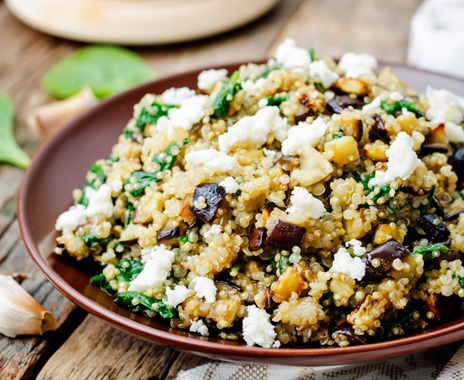Occasionally, it happens that a menu item that once was perfectly at home off to the side of the main course migrates to the center of the plate. It’s happening now with poutine, the traditional Québécois medley of french-fried potatoes, cheese curds, and gravy. Once a snack or, at best, a side dish, poutine has ensconced itself comfortably at the head of the table. Mess Royale in San Diego, for instance, has organized an entire concept around poutine. Its platters start at $8 and edge up to $15 for a version topped with Maine lobster. And last year, several publications reported that a handful of well-known Canadian poutine chains were exploring the possibility of expansion into the U.S.
This side-to-star-attraction trajectory isn’t unprecedented; probably the best overall example is that of salads. It used to be that mainstream restaurants, either before the meal or beside it, would serve patrons an uninspired saucer of iceberg lettuce, onion, diced carrots, a cherry tomato, some standard-issue croutons, and a choice of ranch, Italian, French, Russian, or Thousand Island dressing. Today, larger, more elaborate, and higher-quality salads occupy a good-sized chunk of their own real estate on many quick-service menuboards, with elevated price points to match.
The reasons for the surge in salad popularity are pretty obvious: They’re healthful, and for the most part, their ingredients are sustainable, humane, and affordable. Just as importantly, though, salads provide opportunity for customization and flavor adventure—two traits Millennials consider essential in everything from sandwiches to snack bars to smoothies.
But salads aren’t like most other center-of-plate products. For starters, there’s more variety per bite in a salad than in just about any other entrée or main course. With a burger, sandwich, taco, or pizza, quality and success are often measured by consistency from bite to bite; consumers want to taste every constituent part of the product each time they dig in. But with salads, every bite is practically guaranteed to be slightly different. So operators have the opportunity to compose and package their salads in ways that allow for variety in each mouthful.
Salads are exceptional in other ways, as well. For example, by varying ingredient combinations or the volume of any single component, we can substantially alter the flavor profile of the entire salad. Adding, subtracting, or tinkering with the quantity of, say, arugula, basil, citrus, nuts, or tomatoes in the bowl can have a transformational effect. Salads are also readily adaptable to different world cuisines; the very same bed of greens tossed with a blue cheese dressing becomes an entirely different meal when tossed with Vietnamese vinaigrette.
The ease with which salads can be mixed, modified, and mashed up makes them particularly ripe for reexamination and reinvention. Consider the variations that could come from creatively deploying, mixing, or matching any or all of the following five ingredient categories.
Interesting greens
Romaine, endive, arugula, and even kale are just the tip of the … iceberg. Chains haven’t even begun to harvest the full range of green leafy substances available to them. Here’s just a partial list: frisée, radicchio, escarole, tatsoi, watercress, beet greens, mâche, red leaf lettuce, dandelion greens, lollo rosso, red mustard, and miner’s lettuce. Some have more robust nutritional profiles than others, but all offer interesting alternative flavors and textures, and all could form the basis for novel salads.
Vegetables
It’s not so much that we need increased variety in this area—quick-serve chains already provide a fairly expansive rainbow of vegetables within their existing salad options. But there is room for different preparations, from fresh to baked, sautéed to pickled, and stewed to grilled.
Grains
Grain-based salads are becoming increasingly popular, and given the number and variety of options available, it’s no wonder: there’s farro, spelt, quinoa, amaranth, sorghum, freekeh, teff, and millet. Some are rich in protein or fiber; all could potentially serve as interesting salad toppers or mix-ins.
Proteins
While other proteins that have meat’s density are relatively few in number, there is a handful that can gin up the satiety factor of the average salad. I’m thinking of ingredients like peas, beans, lentils, chickpeas, tofu, edamame, spinach, eggs, nut butters, and yogurt.
Dressings
The final category is also the one offering the most obvious potential for creativity and experimentation, since dressing is what ultimately gives a salad much of its overall personality and distinct ethnicity. And of course, since there are a limitless number of ways to combine oils, herbs, spices, seasonings, vinegars, cheeses, and other ingredients to produce a great dressing, no menu developer need feel constrained when formulating a new variety.
What’s the most creative salad you’ve either produced or consumed lately? What made it special? I’d love to hear about it. Email me at marc@qsrmagazine.com.












